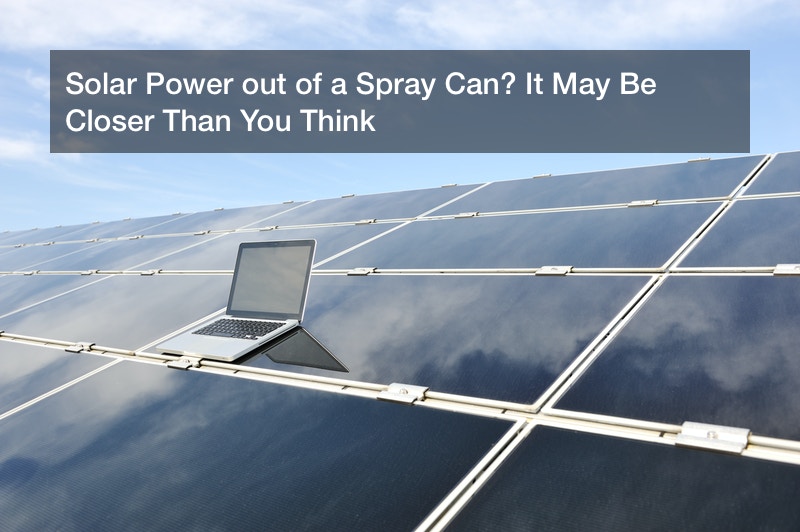
UPDATED 11/9/20
The concept of spray-on tans and spray-on tattoos probably isn’t so far fetched to most people, but spray-on solar cells? As odd as it sounds, the ability to harness the sun’s energy through sprayable solar cells could soon be coming to a roof near you.
Researchers at the University of Toronto have recently developed new technology that would give people a cheaper and less obstructive way to use solar panels on their roof. Called SprayLD (the LD stands for “layer deposition”), the new spray-on solar cells would allow solar experts to spray surfaces with the innovative new solution to create thin solar panels for homes and other buildings.

“My dream is that one day you’ll have two technicians with Ghostbusters backpacks come to your house and spray your roof,” said University of Toronto electoral and computer engineer Illan Kramer, according to Discovery News.
Researchers used small, solar-sensitive colloidal quantum particles mixed in a solution to create the liquid solar material. They then used a spray nozzle to apply the solution to various flexible film surfaces to create their very own solar cells.
So what’s so great about spray-on solar cells, anyway? First of all, the current technology used for solar energy is pretty expensive, and installing solar panels on a roof costs homeowners a good chunk of change — even though the long-term energy and financial savings offset those expenses. SprayLD technology, however, would drastically reduce both production and installation costs.
The second factor has to do with aesthetics. The solar panels that are typically used for residential and commercial purposes today are bulky, and their presence on homeowners’ roofs is fairly obvious. Some homeowners associations would even consider modern solar panels an eyesore and prevent homeowners from having them installed altogether.
Spray-on cells are applied to much thinner, flexible surfaces and are barely noticeable when installed on a roof.

Aside from the cost and aesthetic benefits of spray-on solar cells, they could also be used to charge smaller electronic devices, such as smartphones. The diverse applications of sprayable solar cells open up a whole new set of doors for the solar industry.
Today, residential solar power companies are making it easier for people to afford solar as a service. Many people aren’t switching to solar power because they think that it will still be too expensive for them. However, even the installation of a solar panel is much less expensive than it used to be, and the subsequent costs are even lower. Residential solar providers are making it possible for a lot of households to use solar power.
The solar cell suppliers of today are offering solar cells that are known for their efficiency. The materials that have been used to make solar cells in the first place were once relatively expensive, but this has started to change more recently. Engineers and other experts have also found ways to use those materials much more effectively. A solar cell that was manufactured using a single material can still be relatively efficient, at least compared to solar cells in the past.
However, when similar cells are made using half a dozen materials, those solar cells will be significantly more efficient. People are very interested in solar power these days. Solar power is being much more heavily researched than it was in the past, which has led to a lot of advances.andnbsp;
Related Keywords: cutting edge solar panels, liquid solar panels, perovskite solar cells for sale, ai solar panel, artificial intelligence in solar, diy solar cells from scratch, diy solar paint, liquid solar cell, perovskite price, perovskite solar cell cost, perovskite solar panel price, photovoltaic paint for sale, photovoltaic paint solar energy, silicon solar cells vs perovskite, solar power paint for sale, spray on photovoltaic, buy perovskite solar panels, cutting edge solar technology, howstuffworks solar cell, printing solar cells at home, spray on photovoltaic cells.



